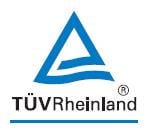
Peter Grundberg Peter Grundberg is a strategic commercial executive, brand builder, and growth architect for industrial equipment / machinery manufacturers, and product testing / verification laboratories that operate in the Industrial markets of Power Generation, Control & Automation, Renewable Energy, Oil & Gas, Transportation, Mining & Construction, Heavy Industrial, and Hazardous Locations. For more than 15 years, Peter has been actively involved with product manufacturing and conformity assessment services, expanding business and helping companies manage their risk as it relates to their new product development. Read full bio |
 Product Compliance: Those Who Fail to Plan, Plan to Fail
Product Compliance: Those Who Fail to Plan, Plan to Fail
It’s been said that those who fail to plan, are essentially planning to fail. Think about the last time your organization has introduced a new product. You’ve got a great idea for a new product and your market research suggests that it will be bigger than the iPod!
You’ve discussed the idea with Engineering and they’ve started to design a prototype. The prototype is finished. And, you’ve tested the concept with focus groups and industry experts and have generated some very positive feedback.
Your financial projections are solid and you’re looking at some significant revenue growth. You’ve received samples from the factory and are now working with manufacturing to determine forecasts and production schedules.
The national sales meeting is approaching and all is set for a successful launch. The sales team is gathered along with regional and national distributors to witness the product launch and to learn of the features and benefits they will sell to their customers.
All of this sounds exciting, right?
Now ask yourself the question, where in all of that planning and execution did my product compliance activity sit?
Was it part of the Engineering discussion and the product design? Or did you wait to talk about compliance at the end with the customer when it’s now time to deliver? If it’s the latter, you are way too late to the party. At that point, the customer is about to unload on you with POs and their delivery requirements. If your product still has to be certified, there is no guarantee your product will pass and be ready in time for delivery – and should the product fail testing – you are going to be in a world of hurt with your customer and their inventory needs.
A Dangerous Gamble
I can’t tell you how many times I’ve seen this happen. Manufacturers will wait to get an OSHA accredited NRTL (Nationally Recognized Test Laboratory) to certify their product at the very end of the product development life-cycle, only to find-out their product does not meet the requirements of the relevant safety standard. The ensuing outcome can be catastrophic: Missed deliveries, black-listed vendor status, lost revenue, job loss for product managers, and more. All of which is completely avoidable if a company includes product certification early-on in the product development. It can be as simple as opening a consulting project with a NRTL early in the design process, or having them perform a preliminary review against the relevant standard as you get closer to final production.
A Catastrophic Example
I was once involved with a manufacturer of gas grills who waited till the very end to involve the NRTL in the development of an entire line of grills and grilling accessories. They had recently been awarded a significant PO with a major big-box retailer and were desperate to ship in time for the spring merchandising resets. However, one month prior to shipping, they learned the product did meet the requirements of the safety standard and failed to receive certification. Now, if they had stopped and explained to their customer what was going on and tried to generate a contingency plan, they might have been ok and lost just a selling season. Unfortunately, the company and buyer decided to gamble and accept the product “as-is” but continue the process of making corrections to the product, resubmitting for certification, and then correcting and applying labels to the products as they arrived in the stores at a later date. As you might suspect, the result was catastrophic. Some of the gas grills made it to the field prior to any correction and a house was caught on fire. The aftermath and subsequent lawsuit financially hurt the retailer and manufacturer, permanently blacklisted the manufacturer, and lost the buyer and product manager their jobs. When you consider the lifetime value of the opportunity at play, the manufacturer lost out on roughly $500 million in subsequent product sales. All because of a failure to plan… and maybe a bit of foolishness as well.
Perhaps that example seems a bit extreme, but what about a piece of industrial food & beverage packaging machinery that is built with no safety barriers or precautions for operators and the ensuing result is a lost finger or arm. Or how about a medical device that comes with a non-compliant relay or motor control and is the cause of a patient death? As extreme as it may seem, product manufacturers have a responsibility to make the best products possible. After all, it’s your brand name on the product. That should mean something to you, so don’t short-cut your development process and then expect to win in the end.
Proaction vs. Reaction
The key to it all is being proactive and not reactive with your development process. Whether you use a “stage-gate” process or some other methodology, there is no reason certification can’t be an early part of the conversation so possible hang-ups are minimized. Remember, reaction is always more expensive than proaction. It’s a proven fact. A well thought-out plan will always provide cost savings than not having a plan at all, so do yourself a favor and develop a certification plan. If you haven’t the time to make a plan, you essentially limit your ability significantly to consider and plan for any unforeseen challenges. Make no mistake about it, you will have to deal with those challenges at some point in time and it may be during a period of urgency which will cost you to expedite.
Increase Your Chance for Success 100%
The Project Management Book of Knowledge (PMBOK) states that the chance of success increases 100% by writing your plan down. So develop your plan and then write it down. Don’t leave your product compliance up to chance and certainly don’t leave it up to fate. You can’t just think your products will conform to US safety standards. You have to prove it with third-party testing and certification. Get with an accredited NRTL and partner with them for your certification needs. Involve them in your developmental process and allow them to help you create the very best products you can for a customer base you rely on as your very own partners.
For more information, please speak to our experts:



